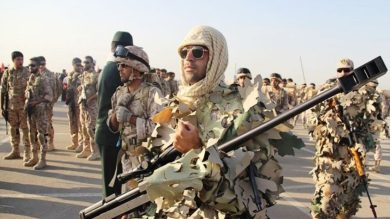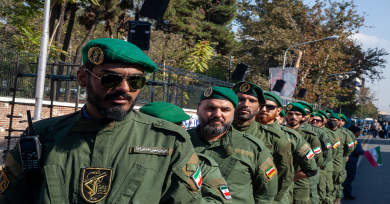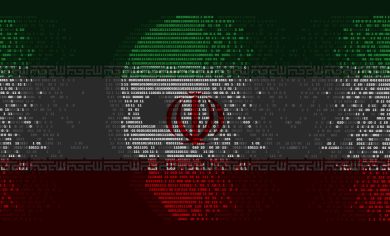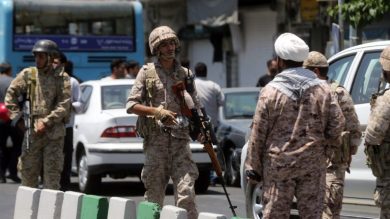For decades, Iranian women have lived under the shadow of oppression. But since the Islamic Revolution in 1979, they have also been on the frontlines of resistance. The Islamic Revolutionary Guard Corps (IRGC)—the regime’s most powerful and ideologically driven military institution—has long played the role of enforcer in the systematic control of women’s bodies, voices, and choices.
And yet, in the face of surveillance, prison, torture, and execution, Iranian women continue to rise.
This article explores the history, brutality, and resilience within the ongoing confrontation between Iranian women and the IRGC. It honors the women who are fighting not only for themselves, but for freedom, dignity, and equality in Iran—and across the world.
1. The IRGC and Gender Control: A Strategic Mission
From its inception, the IRGC has viewed women as symbols of either moral virtue or rebellion. Enforcing control over women is not incidental—it’s central to the IRGC’s ideological and political power.
Key Aspects of IRGC-Enforced Patriarchy:
• Mandatory hijab enforcement through the Basij and morality police
• Surveillance of social behavior (social media, clothing, public conduct)
• Suppression of female-led protests and activism
• Censorship and intimidation of women in the arts and media
The regime’s fear is clear: A free woman is a revolutionary threat.
2. Mahsa Amini: A Name That Changed Everything
In September 2022, 22-year-old Mahsa (Jina) Amini was arrested by the morality police—operating under the influence and command structure of the IRGC—for allegedly wearing her hijab “improperly.” She was beaten in custody and died days later.
Her death sparked one of the most significant uprisings in Iran’s modern history, led largely by young women chanting:
“Woman, Life, Freedom.”
The IRGC responded with bullets, mass arrests, and surveillance. But something irreversible had begun. Mahsa became the face of a revolution of courage.
3. Violence Against Women Protesters
During the 2022–2023 protests and beyond, the IRGC employed brutal tactics specifically designed to target women:
Documented Abuses:
• Pellet shots to faces and eyes of female protesters
• Torture and sexual assault in detention centers
• Beatings during hijab enforcement arrests
• Forced “confessions” on state television
These attacks were not incidental—they were meant to degrade, silence, and deter. But instead, they ignited further resistance.
4. Schoolgirls and Students: The Youngest Rebels
In an unprecedented wave of defiance, Iranian schoolgirls across the country joined protests:
• Removed their hijabs in class
• Flipped off portraits of Khamenei
• Chanted anti-regime slogans in hallways
The IRGC and state forces responded with school expulsions, beatings, and psychological warfare. Some girls were even poisoned in mass attacks in 2023—widely believed to be state retaliation.
Despite this, the youth-led movement persisted. Their bravery became viral, their courage contagious.
5. Women Political Prisoners: Jailed But Not Broken
Iran’s prisons are filled with female political prisoners—many of them detained by IRGC intelligence units.
Notable Voices of Resistance:
• Narges Mohammadi: Nobel Peace Prize winner, imprisoned for exposing torture in IRGC-run prisons.
• Sepideh Gholian: Labor activist, tortured and re-arrested after every release.
• Atena Daemi: Children’s rights advocate, endured multiple hunger strikes.
• Zahra Mohammadi: Kurdish language teacher sentenced for “national security crimes.”
These women are not only prisoners—they are beacons of endurance and symbols of defiance.
6. The Hijab as a Battlefield
The compulsory hijab is more than a piece of cloth. It’s a weapon of control, enforced violently by the IRGC and its auxiliaries.
Methods of Enforcement:
• Arrests by morality police
• Public beatings and detentions
• Car seizures and fines
• Facial recognition tech deployed by IRGC cyber units
But thousands of women continue to defy hijab laws—many unveiling in public, in courtrooms, or on camera. For the IRGC, this disobedience is a direct assault on their legitimacy.
7. Women Artists and Cultural Icons Under Fire
Women in arts and media have also been targeted for challenging the regime’s control.
Targeted Figures:
• Taraneh Alidoosti: Actress arrested for supporting protests.
• Golshifteh Farahani: Exiled actress and regime critic.
• Female musicians and dancers: Banned from performing, often jailed or exiled.
The IRGC views female visibility and creativity as dangerous. Every woman who sings, paints, or writes freely becomes a revolutionary act.
8. The Role of the IRGC’s Cyber Units
The IRGC’s cyber army plays a key role in suppressing female dissent:
• Hacking accounts of women activists and influencers
• Spreading fake news and deepfakes to discredit dissidents
• Blackmailing women with private photos or messages
• Creating fake profiles to entrap, monitor, or intimidate
This digital repression is as chilling as it is effective. But even in this space, women continue to resist—with encrypted apps, underground networks, and global support.
9. Diaspora Women: Resistance Without Borders
Outside Iran, Iranian women in exile have become vital to the resistance.
Leading Voices:
• Masih Alinejad: Target of multiple IRGC assassination/kidnapping plots; relentless advocate for Iranian women’s freedom.
• Shirin Ebadi: Nobel laureate and human rights lawyer.
• Hoda Karmi, Roya Boroumand, and many others—lawyers, artists, journalists—amplifying the voices of those inside Iran.
They build bridges between victims, witnesses, and the global justice system—ensuring that the IRGC’s crimes are not forgotten.
10. Solidarity Among Women Globally
The Iranian women’s movement has sparked global solidarity:
• Protests in over 100 cities around the world
• Hair-cutting ceremonies in support of Mahsa Amini
• Feminist movements in Turkey, Afghanistan, and the Arab world drawing inspiration
• Joint statements by women politicians, artists, and human rights defenders
This revolution is Iranian—but its message is universal: Patriarchy is violence. Resistance is life.
11. The IRGC’s Fear: A Gendered Collapse
The IRGC understands one thing clearly: If it loses control over women, it loses control over Iran. That’s why it:
• Treats women’s bodies as battlefields
• Uses public executions and torture as deterrents
• Labels unveiled women as “foreign agents” or “corrupt on earth”
But its brutality reveals its fear—and its fear reveals its weakness.
12. Legal Pathways to Justice
What Can Be Done:
• Magnitsky sanctions against IRGC officials involved in abuses against women
• Terrorist designation of the IRGC and Basij militia
• Universal jurisdiction cases for sexual violence and torture survivors
• UN fact-finding missions and international court referrals
• Protection for at-risk women in Iran and the diaspora
Justice for Iranian women is not symbolic—it is actionable.
13. How You Can Support the Women of Iran
• Amplify their voices on social media
• Support legal funds and human rights orgs
• Pressure governments to designate the IRGC as a terrorist organization
• Share verified stories of abuse and resistance
• Join global demonstrations and campaigns
No action is too small. Every act of solidarity is a crack in the wall of repression.
Conclusion: A Revolution Written by Women
This is not just a protest—it’s a revolution. A revolution written by unveiled faces, broken shackles, prison letters, and defiant songs.
The IRGC has the guns. But Iranian women have the truth.
The IRGC builds prisons. Iranian women build movements.
The IRGC spreads fear. Iranian women ignite hope.
Join Our Newsletter!
Stay informed with the latest updates, news, and ways to take action in the fight for justice and global security. Sign up now to get updates delivered straight to your inbox!





